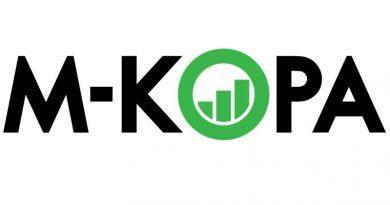Global growth rate could drop by more than a quarter thanks to tariffs, S&P chief economist forecasts
Global gross domestic product (GDP) growth could take a hit to the order of around one percent if tariff threats escalate into a trade war, S&P Global’s chief economist forecast Monday.
It may not be a global recession, but “one could imagine a scenario where rather than global growth in the threes we have global growth in the twos, where you get the U.S. and Europe and China all pulling back at the same time,” said Paul Gruenwald, chief economist at analytics firm S&P Global, speaking to CNBC’s “Squawk Box Europe.”
Global growth in 2017 was 3.7 percent and is projected at 3.8 percent this year and 3.9 percent in 2019, according to the Organization for Economic Cooperation and Development. That’s nearly at the cruising speed of 4 percent reached before the financial crisis, and it’s taken the world a decade to get here.
The OECD and the International Monetary Fund have both issued forecasts expressing confidence in global growth while highlighting a trade war as a major downside risk to their generally still-positive outlooks.
And S&P isn’t the only entity to call such a figure: According to staff simulations by the European Central Bank, global growth could contract by up to 1 percent just in the first year after the tariff changes and world trade in goods could contract by up to 3 percent.
Deal or no deal?
Tensions between the world’s two biggest economies have been on the up ever since President Donald Trump threatened tariffs on up to $150 billion worth of Chinese goods, citing unfair commercial practices on the part of Beijing and a gaping U.S. trade deficit. China has threatened to respond by raising duties on $50 billion in U.S. goods, and the two are currently in negotiations that so far have not reached major conclusions.
The talks involve China working to narrow its trade surplus with the U.S. — which reached a record $375.2 billion in 2017 — by increasing purchases of American goods, particularly in the energy and agriculture sectors. But any tentative progress was thrown into jeopardy last Tuesday when the White House renewed a threat to impose 25 percent tariffs on $50 billion worth of Chinese high-tech products over what it called Beijing’s practice of stealing or copying foreign companies’ technology.
China warned over the weekend that any deals reached during these meetings would not go ahead and retaliatory measures would be taken if Washington were to enact the threatened tariffs.
Markets calm — for now
Interestingly, markets have not reacted dramatically to the news — Asian markets on Monday picked up from a strong close on the positive U.S. payroll numbers released Friday, and are currently at a two-and-a-half year high. Some Wall Street observers think that perhaps the markets have grown accustomed to Trump’s erratic negotiating style.
Gruenwald pointed out what he saw as the narrow trade impact being “actually quite small,” but cautioned over the second order effects of this: “Then folks spend less money, firms lower capex (capital expenditure), then you get to something that really moves the needle and the markets don’t seem to be taking that into account.”
While S&P’s outlook is still positive and underpinned by strong market fundamentals, cracks seem to be appearing a little bit more visibly than before. The growing threat of a trade war, that would see other countries beyond the U.S. and China raise barriers to global commerce, could throw a wrench in the upswing that has otherwise been a major cause for optimism.
“That’s a tail risk right now,” Gruenwald said. “The baseline is still the synchronized upturn, but what’s been happening is the risks have been shifting to the downside, so everyone is paying attention to these scenarios that look maybe a little more plausible than they did before.”
From Natasha Turak | @NatashaTurak, Cnbc.com




